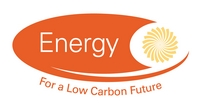Projects
Projects: Projects for Investigator |
||
| Reference Number | NIA2_NGESO0014 | |
| Title | A Common Framework for a Virtual Energy System | |
| Status | Completed | |
| Energy Categories | Other Cross-Cutting Technologies or Research(Energy Models) 50%; Other Cross-Cutting Technologies or Research(Energy system analysis) 50%; |
|
| Research Types | Applied Research and Development 100% | |
| Science and Technology Fields | PHYSICAL SCIENCES AND MATHEMATICS (Computer Science and Informatics) 100% | |
| UKERC Cross Cutting Characterisation | Systems Analysis related to energy R&D (Energy modelling) 50%; Systems Analysis related to energy R&D (Other Systems Analysis) 50%; |
|
| Principal Investigator |
Project Contact No email address given National Grid ESO |
|
| Award Type | Network Innovation Allowance | |
| Funding Source | Ofgem | |
| Start Date | 01 December 2021 | |
| End Date | 30 September 2022 | |
| Duration | ENA months | |
| Total Grant Value | £350,000 | |
| Industrial Sectors | Power | |
| Region | London | |
| Programme | Network Innovation Allowance | |
| Investigators | Principal Investigator | Project Contact , National Grid ESO (100.000%) |
| Industrial Collaborator | Project Contact , National Grid Electricity Transmission (0.000%) |
|
| Web Site | https://smarter.energynetworks.org/projects/NIA2_NGESO0014 |
|
| Objectives | This project will be a desk-based technical feasibility study delivered with input from a wide range of stakeholders. The project will: research relevant real-world examples of digital twins in order to recommend learnings which the Common Framework should incorporate and to indicate the cost and resource which may be required to develop the VirtualES explore and clarify the scope and key elements of the Common Framework, considering technical standards, commercial arrangements, and legal aspects, in order to highlight pertinent issues, outline options and identify gaps recommend approaches for delivering aspects of the Common Framework, which may include suitable delivery bodies, activities for stakeholder groups, recommendations for technical content, and roadmaps for further technical development Stakeholders will be able to input to this project at various stages through meetings, workshops, and questionnaires. This will include engaging Subject Matter Experts (SMEs) for technical advice and user stakeholders for feedback on the content and approaches proposed. Risk Assessment In line with the ENAs ENIP document section 3.2, the risk rating is mostly scored Low (Score 1). TRL Steps = Score 1 (one TRL step from 2 to 3) Cost = Score 1 (£350,000) Suppliers = Score 1 (one supplier contracted) Data Assumption = Score 2 (scope known but will be refined during the project and appropriate standards and guidance will be identified during the project) The overall scope of the project is to clarify the key aspects of a Common Framework and recommend approaches for its further development. The project will therefore cover: relevant digital twin work and best practice guidance from energy and non-energy sectors identifying the scope and key elements of a Common Framework, as well as any gaps; this may include technical aspects related to system architectures, modelling approaches and data standards and may also include collaboration aspects related to commercial and legal arrangementsrecommending specific options, approaches and activities for the next steps to deliver a Common Framework, including identifying delivery bodies, any gap filing work required and stakeholder engagement priorities The ESO can directly deliver financial benefits from the VirtualES by feeding the new insights into the control centre, markets, networks, and strategy teams. Supporting operational decisions to improve day-to-day economic efficiency as well as strategic planning and market development to deliver value over the long term. Energy sector companies, including Licensees, asset owners/operators and innovators, will also benefit from new insights. The VirtualES can support investment decisions for asset deployment, operational decisions for actions coordination and asset optimisation, and cross-sector insights to enable a coordinated transition to a zero carbon energy system. Consumers will also benefit, as the VirtualES enables them to be an integral part of the energy transition. VirtualES data can support consumers reducing their energy carbon footprint, enable their participation as prosumers with batteries and PV, and deliver full-chain flexibility from smart EV charging and heatpump operation. This project has the following objectives: Objective 1: to capture key learnings from relevant digital twin work and apply them as recommendations for the development of a Common Framework for the VirtualES Objective 2: to identify the scope and key elements of a Common Framework, considering technical standards and engagement principles, including identifying areas where gaps exist Objective 3: to set out delivery options and recommended next steps for developing the Common Framework as a whole and any specific aspects within it where there are gaps | |
| Abstract | The ESO is developing the Virtual Energy System (VirtualES) Project to improve data driven decision making in an increasingly complex low-carbon energy system. The VirtualES project will create a digital twin of the GB energy system by integrating currently disparate models and data from stakeholders across the energy landscape. A Common Framework is an essential underpinning for the VirtualES project. It will set out the technical standards and engagement principles which stakeholders can follow to collaborate and build an interoperable VirtualES. This integration will deliver new insights to improve investments, operation and participation, ultimately driving customer benefits. This feasibility study explores the scope and content for a Common Framework, investigates how it can be informed by current best practice, and recommends possible delivery approaches. | |
| Data | No related datasets |
|
| Projects | No related projects |
|
| Publications | No related publications |
|
| Added to Database | 19/10/22 | |



